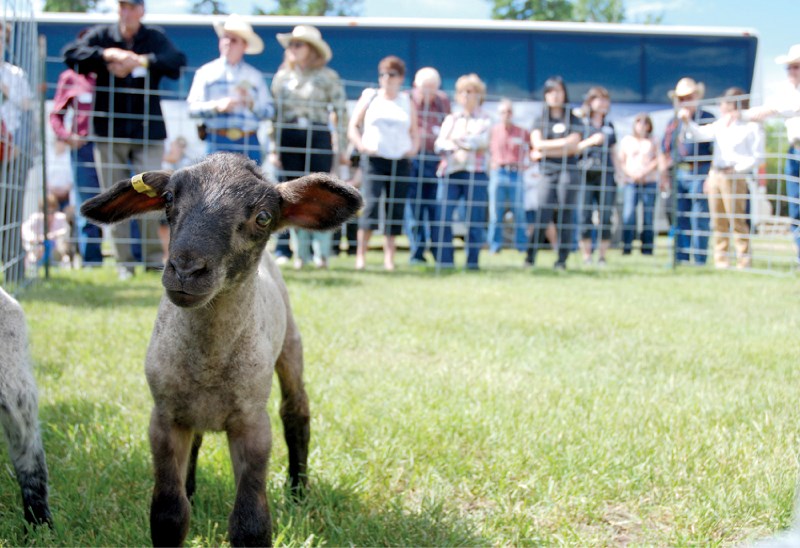Alberta’s 1,800 lamb producers will soon have access to information that could help them manage operations more efficiently and increase profits.
A recently announced $456,000 grant from the Alberta Livestock and Meat Agency (ALMA) will allow Alberta Lamb Producers (ALP) to share lessons learned in the lamb traceability project and potential benefits of a flock management system, which utilizes radio-frequency identification (RFID) technology.
The money will be used to hire project contractors, educate producers at regional skills training sessions, finalize software development and develop communications materials.
“The lamb industry has long been seeking better tools to support expanding production, increase profitability and attract a new generation of producers,” said Jack Hayden, minister of Alberta agriculture and rural development (AARD).
“This project will allow producers to use RFID technology to manage their operations more efficiently.”
ALP and AARD partnered to develop the Lamb Traceability Project about three years ago to meet regulatory requirements for traceability and provide tools for managing flocks more efficiently and profitably.
The pilot started about three years ago with one producer and has since grown to include 50 of the largest producers in the province.
Bob Anderson, a Kathyrn-area producer who lambs out about 240 ewes, has been involved with the pilot project for several years.
He said the RFID tagging system is a benefit on his farm.
“We have always identified our animals and weighed them and kept track of them,” he said. “What the technology does is simplify things for us.”
Anderson no longer has to see the tags to identify an animal, as his reader can pull up the required data from a distance.
“It speeds things along and improves our records,” said Anderson.
Among the benefits is increased knowledge of each animal, including its genetic history and carcass information.
“It’s nice to be involved in something innovative like this,” said Anderson. “It’s been a benefit to compare notes with the other co-operators.”
Over the first three years of the project, several data collection systems were tested. Ultimately, a radio frequency tag system was chosen. Producers tag their animals with radio frequency identification (RFID) markers, which store data that is easily accessible by readers and manageable through home computer software.
“The benefits are significant for those producers who choose to adopt the system,” said Margaret Cook, ALP’s executive director. “The system helps to collect the information and generate reports to enable (producers) to make good management decisions.”
Cook said the record-keeping system puts Alberta producers in a good position for when the government puts traceability regulations in place and is important for trade and disease tracing.
“Alberta producers are really at the leading edge,” said Cook. “And our co-operators have worked really hard at this.”
Other potential benefits of the flock management system include increased profits, labour savings, improved ewe production and reduced feed costs.
Mandatory ear-tagging was put in place by the Alberta government in 2004. However, Cook said that producers now have to use RFID tags.
Cook explained that although the RFID tags will be mandatory, the software and readers won’t be.
She also said the ALP will be lobbying the government for money to help interested farmers purchase the technology over the next few years.
Anderson added the sheep market looks good, with Canadians only supplying 50 per cent of its domestic market and numbers down in Australia and New Zealand, countries that have historically supplied much of the world’s lamb.
Cook agreed.
“Right now, there is some profitability in it, and there is a huge market,” she said.
“We have more market than we can handle.”
For information on the Lamb Traceability Project, visit www.sheepcentral.ca



